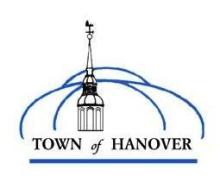Legal Eagles: Ammon FTTH Can Fly As Planned
Ammon now has judicial confirmation to move ahead on their Fiber-to-the-Home (FTTH) project.
As we reported earlier this year, Ammon's Fiber Optic Department, led by IT Director Bruce Patterson, is on the verge of commencing the next phase of its incremental network deployment. Bruce explained to Chris in Episode #173 of the Community Broadband Bits podcast, how the city will create a utility and residents who choose to participate will pay to have the network connected to their homes. The first area where FTTH will be deployed includes approximately 300 properties.
Innovative Participation Model
As Bruce put it:
"…[I]t seems logical that since fiber to your home raises your property value that we'd find some way to bond for that and put the payment for that bond as on assessment on your property tax because it does actually increase your property value so that's our goal. We do that with what they call a local improvement district."
Ammon intends to issue bonds that will then be paid with funds from assessments levied on the properties of those who wish to connect to the network. If a property owner wants to connect to the network, they will also become a "Utility Member" and will pay a monthly fee to use the service. Ammon's FTTH network will be open access; the city will not provide retail services but will maintain and operate the infrastructure. Residents will subscribe to the services offered by ISPs that operate over the network.
Ammon also intends to offer a low-cost option that will allow Utility Members to access basic functions, such as checking email, messaging, and file transfers without the need to subscribe to an ISP. Their plan will allow people in the community who cannot afford more advanced services to still have access to basic Internet tools.
In order to determine which neighborhoods want fiber, Ammon asks residents to sign up so they know where to aim the next build.
Sweet Validation










